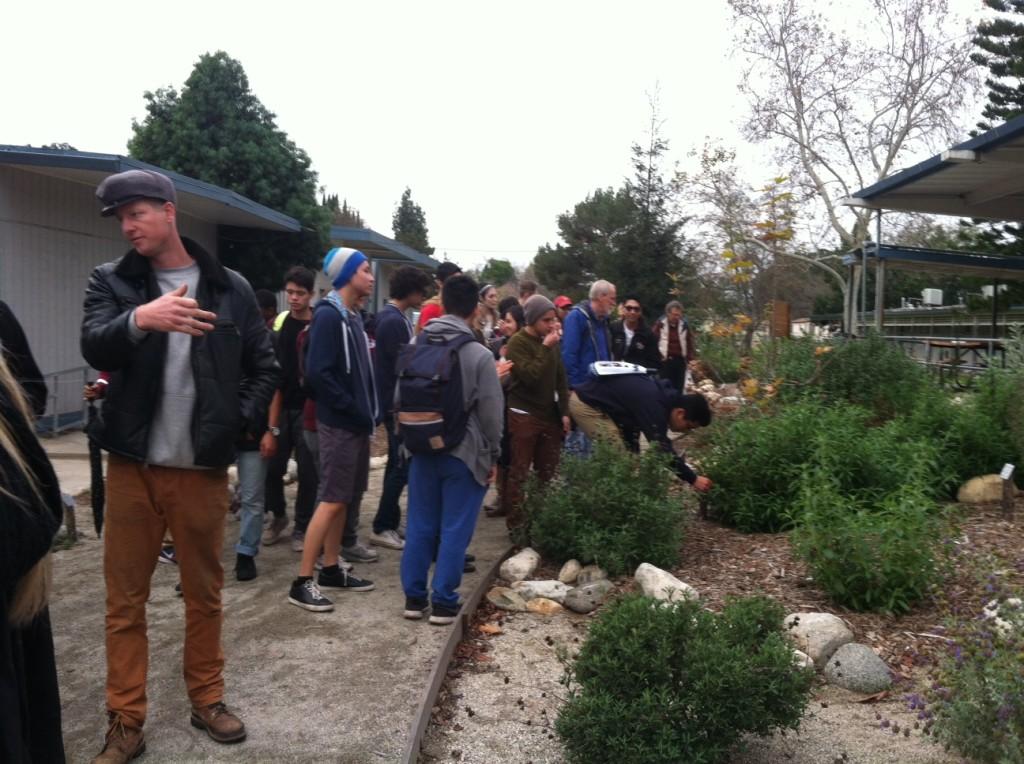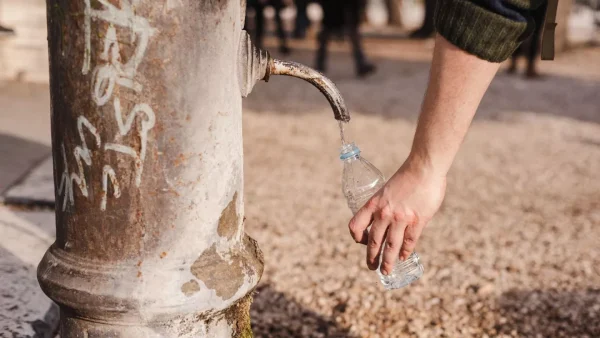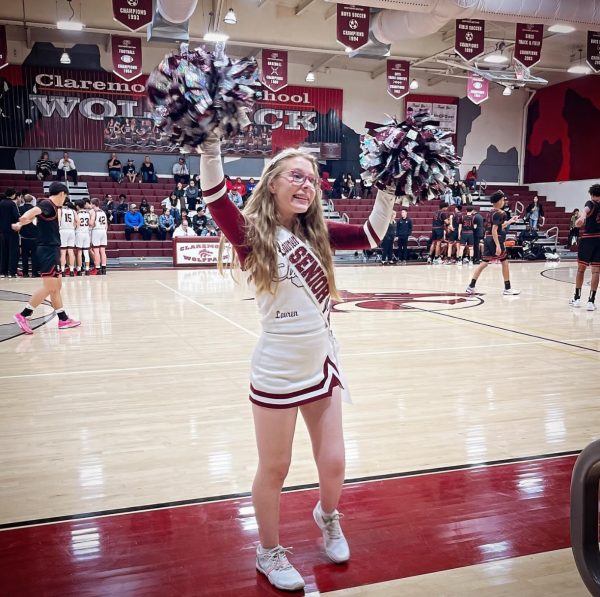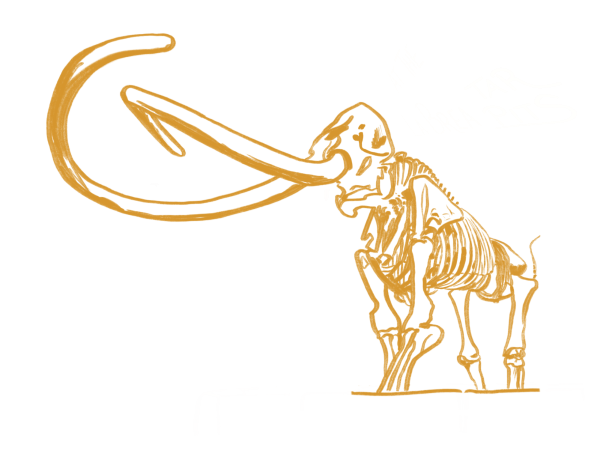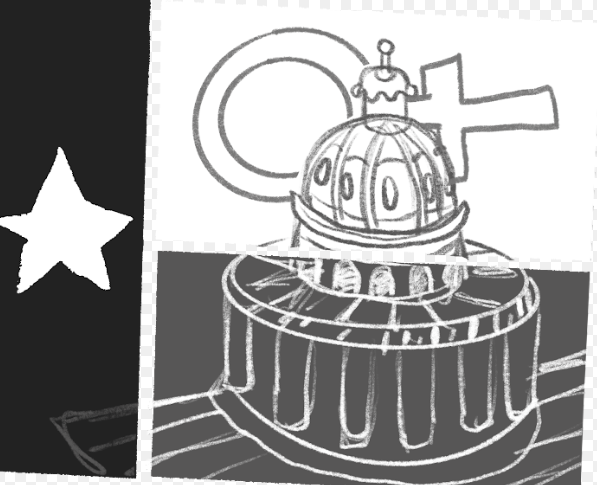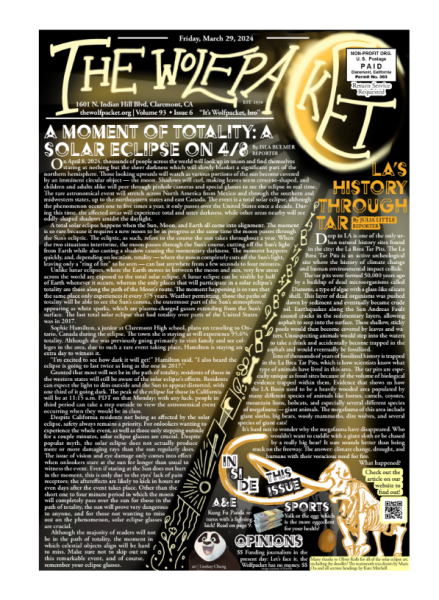CHS Waterwise Project is Underway as Students Help Environment
Across the campus of CHS, one might see students admiring the beautiful foliage throughout the quads. The CHS Waterwise Project was created by math, yearbook, and Wolfcast teacher David Sawhill and environmental science teacher Marizka Rivette. They were given a $400 stipend by an organization called Sustainable Claremont to help improve CHS’s water use and give the environmental science classes a hands-on experience. The process is currently in its beginning stages, as environmental science students gather information and design the redeveloped areas.
“We have to survey the area and find how many different species of plants and their population sizes in the specific areas we were assigned to,” Seniors Andrew Lopez and Eric Li said about what the students do.
The plan was created when Sawhill was chosen to be the Green Team leader of CHS. When Sawhill knew about the project and wanted it to be successful, he enlisted the help of Rivette and they finalized the plans to have the project be run mainly by students with the adults mentoring and teaching them. They wanted students to help the environment and learn more about nature and plants.
Sawhill and Rivette did not have experience in sustainable plants, so they enlisted the help of knowledgeable people such as Dick Haskell, Drew Ready, and Ron Mittino from Sustainable Claremont, led by alumni Alexis Reyes, Andrew Bentson from (Bentson And McCallion) BAM Landscaping, and Dessa D’Aquila, coordinator of the school garden and food-service programs for CUSD. Together, they will help students to create and implement the changes all over the campus.
“I think it is a good thing because in environmental science we learn about sustainable growth and this is an opportunity to apply the concepts we learn in class in our environment,” Senior Sarah Tran, environmental science student said. “By applying what we are learning, we are able to see the true impact that environmental science has. It gives more of an impact of how your education can apply to the real world.”
The students from Rivette’s two Advanced Placement Environmental Science classes are going out once a week to their assigned place to survey the land. They record the area, plants, species, shape, and create topography sketches. Plants that will be used will come from the Santa Ana Botanic Gardens and are native, drought resistant, or low water consuming. The plan is to break ground and start planting by the end of February or early March for optimum planting conditions. All the work done by the students will be during school hours.
“It is a whole do-something, make-it-happen project for the students, as opposed to pseudo-science in the classroom. The purpose is to teach the students to apply science to ‘real life,’ get ideas implemented, going from concept all the way to the realization,” Rivette said.
This will not be the only sustainability project on the CHS campus, as Sawhill plans to help develop many more “green ideas” to turn CHS into a beautiful, sustainable place where students can learn more about the environment.
“By having students work on a waterwise landscape, they learn how to conserve water in a time of drought, learn about native plants, as well as encourage the school district to save money and maintain a sustainable environment,” Sawhill said.
CHS has long been trying to lower its impact on the environment with the installation of water-free appliances in rest rooms and motion-sensor lights to lower electricity consumption. The plan of increasing the sustainability on campus through plants is another way CHS is helping the environment.
Hello there! Our goal is to provide relavent, engaging journalism for readers of all ages. Your donation will support the student journalists of the Wolfpacket at Claremont High School, and will allow us to purchase equipment, print our monthly issues, and enter in journalism competitions. We appreciate your consideration!
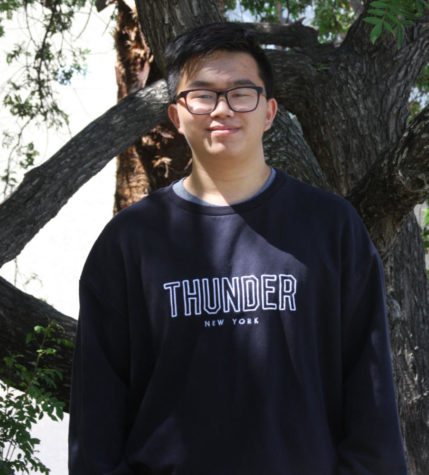
James Jung is a Senior and Editor serving his fourth year on The Wolfpacket. James is a devoted brother to fellow staff members of the Wolfpacket team....





